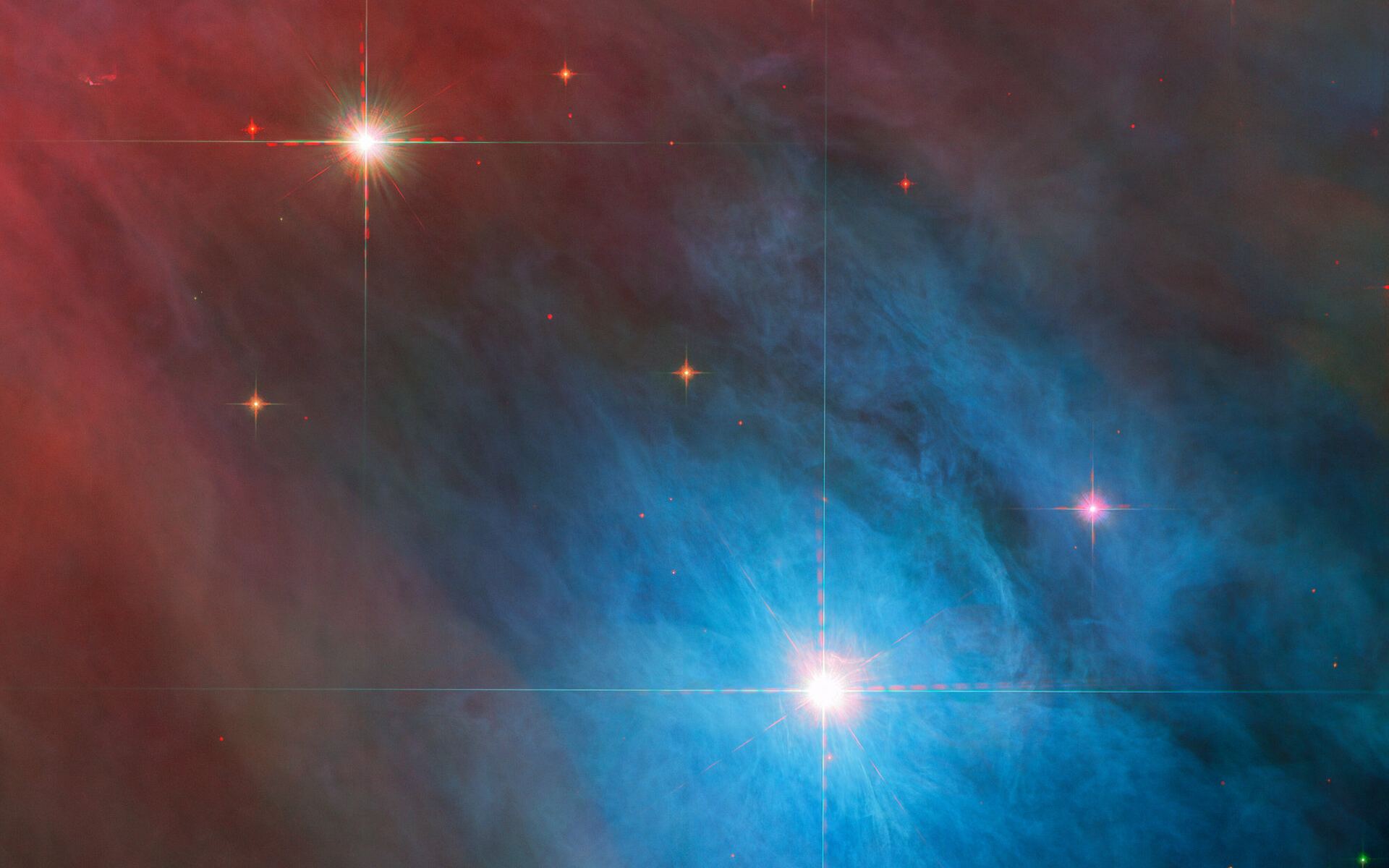Here’s another striking image from the venerable Hubble Space Telescope. These billows of blue and red show a detailed look at a small portion of the famous Orion Nebula. But what really catches the eye are the brilliant stars with the cross-shaped diffraction spikes — a hallmark of Hubble images.

In the center is the bright variable star V 372 Orionis and a smaller companion star in the upper left is named BD-05 1307.
V 372 Orionis, also known as HD 36917 or Ori 47, is a so-called Orion variable — a variable star which exhibits irregular variations in its brightness. Orion variables are often associated with diffuse nebulae, just like the nebulous gas and dust of the Orion Nebula, a massive star-forming region full of young, hot stars that lies approximately 1,450 light-years from Earth.
BD-05 1307, otherwise known as 2MASS J05345223-0533085 or TIC 427373786, is classified as an emission-line star.
This image uses data from two of Hubble’s instruments. Data from the Advanced Camera for Surveys and Wide Field Camera 3 at infrared and visible wavelengths were layered to reveal rich details of this corner of the nebula, a frequent target of Hubble over the years.

The stunning, shaped clouds of gas in the Orion Nebula make it beautiful, but also make it difficult to see inside of. This image of the Orion Nebula was captured by the Hubble Telescope. Image: NASA, ESA, M. Robberto (STScI/ESA) and The Hubble Space Telescope Orion Treasury Project Team
The spikes in the image of stars are not actually parts of the stars, but are imaging artifacts created by the Hubble itself. ESA explains that these prominent artefacts are “created by starlight interacting with Hubble’s inner workings, and as a result they reveal hints of Hubble’s structure. The four spikes surrounding the stars in this image are created by four vanes inside Hubble supporting the telescope’s secondary mirror.”

The inner region of the Orion Nebula as seen by the James Webb Space Telescope’s NIRCam instrument. Credit: NASA, ESA, CSA, PDRs4All ERS Team; image processing Salomé Fuenmayor
In comparison, the diffraction spikes of the James Webb Space Telescope are six-pointed as a result of Webb’s hexagonal mirror segments and 3-legged support structure for the secondary mirror.
Source: www.universetoday.com








